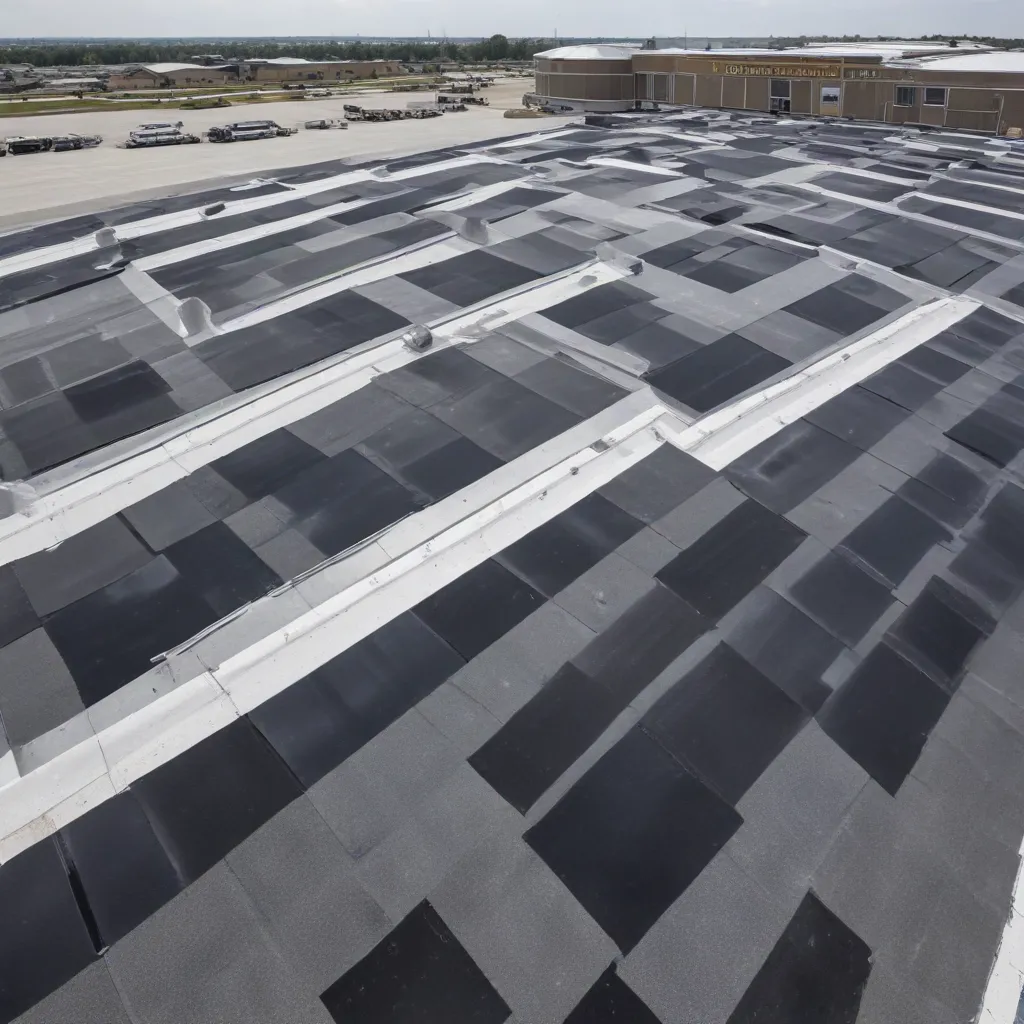
As an experienced roofing specialist, I understand the crucial role commercial roofs play in enhancing a building’s energy efficiency and minimizing its environmental footprint. In this comprehensive guide, we’ll explore strategies for designing commercial roofs that not only perform exceptionally well but also contribute to sustainable practices.
Principles of Energy-Efficient Roofing
Maximizing a commercial building’s energy efficiency starts with the roof design. By carefully considering key principles, we can create roofing systems that effectively regulate indoor temperatures, reduce energy demands, and promote environmental responsibility.
Thermal Insulation Strategies
Proper insulation is the foundation of an energy-efficient roof. Incorporating high-performance insulation materials, such as rigid foam or sprayed polyurethane foam, can significantly reduce heat transfer through the roof assembly. This, in turn, lowers the energy required for heating and cooling, resulting in substantial cost savings for building owners.
Reflective Roof Surfaces
The color and composition of the roof’s outermost layer, known as the roof covering, play a crucial role in energy efficiency. Cool roofs, designed to reflect a high percentage of solar radiation, can stay up to 50°F (28°C) cooler than traditional dark-colored roofs. This reduced heat absorption directly translates to lower cooling loads and decreased reliance on air conditioning, ultimately leading to reduced energy consumption and greenhouse gas emissions.
Ventilation and Air Circulation
Effective roof ventilation strategies, including ridge vents, soffit vents, and attic fans, can enhance air circulation and minimize the buildup of heat within the building’s envelope. By facilitating the removal of warm air, these systems help regulate indoor temperatures and further optimize energy efficiency.
Sustainable Roofing Materials
The selection of roofing materials is crucial not only for energy efficiency but also for environmental sustainability. As a roofing specialist, I recommend exploring options that prioritize low-impact manufacturing, recyclability, and longevity.
Low-Impact Manufacturing
Seek out roofing products that are manufactured using energy-efficient processes and minimize the consumption of natural resources. This may include materials like metal roofing, which can incorporate a high percentage of recycled content, or polymer-based shingles, which can be produced with fewer emissions compared to traditional asphalt-based alternatives.
Recyclability and Reusability
When a commercial roof reaches the end of its lifespan, the ability to recycle or reuse the materials becomes a significant factor in sustainable design. Metal roofs, for instance, can be entirely recycled, while some tile and slate roofing systems can be carefully dismantled and reinstalled on new structures.
Longevity and Durability
Choosing roofing materials with exceptional durability and extended lifespans can reduce the frequency of replacements, minimizing the environmental impact associated with disposal and manufacturing new materials. Properly installed metal roofs, for example, can last for 40-70 years, outperforming many other commercial roofing options.
Environmental Considerations
Beyond energy efficiency and material sustainability, commercial roofs can also play a vital role in addressing broader environmental challenges, such as stormwater management, urban heat island mitigation, and renewable energy integration.
Stormwater Management
Green roofs, which incorporate a layer of vegetation, can significantly reduce the volume and rate of stormwater runoff from a commercial property. This helps alleviate the burden on municipal drainage systems, reducing the risk of flooding and combined sewer overflows.
Urban Heat Island Mitigation
The widespread adoption of cool roofs in urban areas can contribute to the mitigation of the urban heat island effect, where cities experience higher temperatures than surrounding rural areas. By reflecting more solar radiation and reducing heat absorption, cool roofs can help lower the overall ambient temperature, improving outdoor comfort and potentially reducing the strain on the local power grid.
Renewable Energy Integration
Commercial roofs can serve as ideal platforms for the installation of solar photovoltaic (PV) systems, enabling on-site renewable energy generation. By integrating these systems into the roof design, building owners can offset their energy consumption and reduce their carbon footprint, further enhancing the sustainability of the commercial property.
Regulatory Frameworks and Certifications
To ensure the optimal energy efficiency and environmental performance of commercial roofs, it is essential to understand the relevant regulatory frameworks and certification programs. These guidelines and standards provide a roadmap for achieving sustainable roofing solutions.
Building Energy Codes
Local and national building energy codes, such as the International Energy Conservation Code (IECC) or ASHRAE Standard 90.1, often include specific requirements for commercial roof assemblies, including minimum levels of insulation and reflectivity. Adhering to these codes can help ensure that your commercial roof design meets or exceeds the energy efficiency standards.
Green Building Standards
Voluntary green building certification programs, like LEED (Leadership in Energy and Environmental Design) or BREEAM (Building Research Establishment Environmental Assessment Method), provide a comprehensive framework for incorporating sustainable design practices, including the selection of energy-efficient and environmentally responsible roofing systems.
Incentive Programs
Numerous local, state, and federal incentive programs, such as tax credits or rebates, are available to encourage the adoption of energy-efficient and sustainable roofing technologies. Researching and taking advantage of these programs can help offset the initial costs associated with implementing high-performance commercial roofing solutions.
By carefully considering the principles of energy-efficient roofing, selecting sustainable materials, addressing environmental considerations, and navigating the regulatory landscape, commercial building owners and designers can create roofing systems that not only enhance the building’s performance but also contribute to a more sustainable future. As an experienced roofing specialist, I’m committed to helping our clients at Genuine Roof Systems achieve these goals and set new standards for commercial roofing excellence.

























